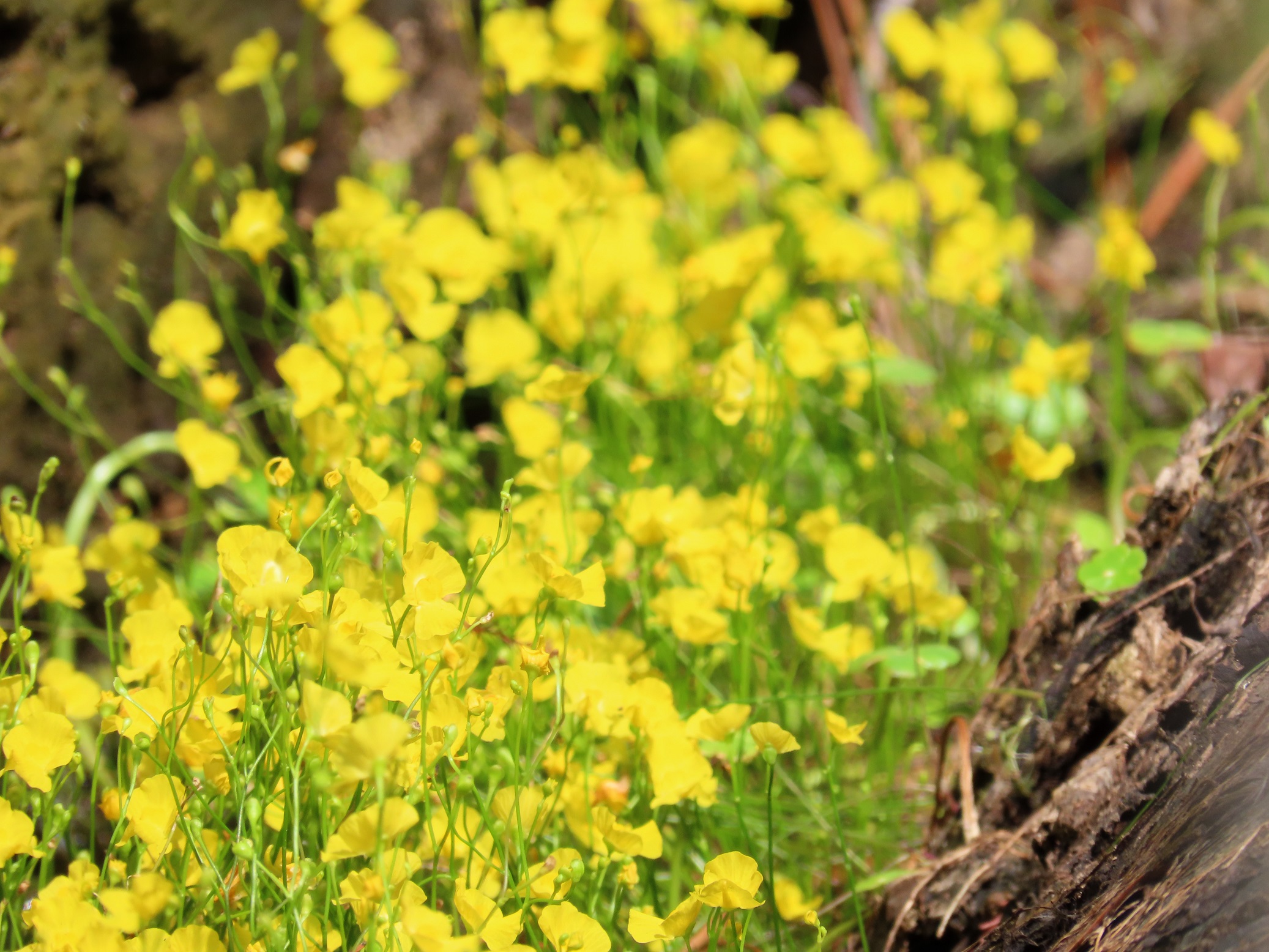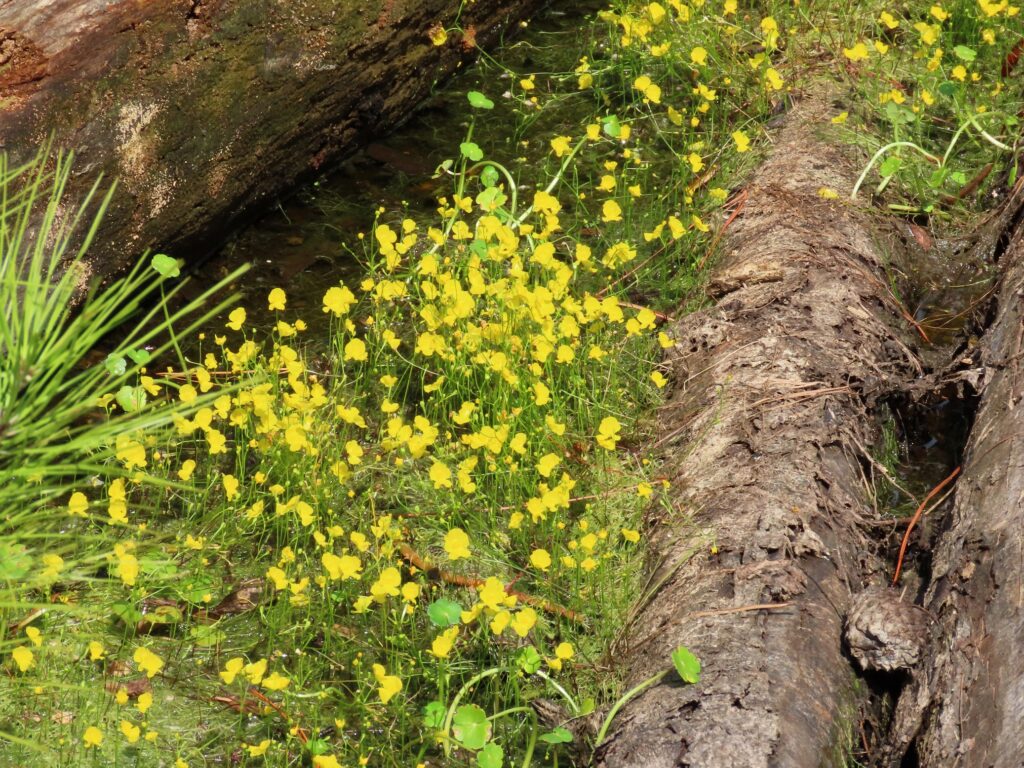



This week for Flora and Fauna Friday we’re dredging up an aquatic, carnivorous wildflower, Humped Bladderwort (Utricularia gibba).
Here is South Carolina we have about ten species of Bladderwort, with about six being somewhat common in the Lowcountry. One, the Humped Bladderwort, is especially common here around Edisto Island and can be found in most every one of our permanent wetlands. So I’ll be focusing mostly on that species today.
Humped Bladderwort spends its days floating about in the warm, stagnant waters of Lowcountry ponds and backwaters. In August and September it blooms, flying its delicate yellow flowers, about the size of a thumbnail, on wiry stems held only a few inches above the water’s surface. Its lemon-yellow flowers are conspicuously saddle-shaped, with a broad and entire, upturned lower petal. When flowering, Bladderworts are hard to miss. But, the rest of the year, they’re hard find! For example, the main body of a Humped Bladderwort plant is a feathery, filamentous mat floating just below the water’s surface, often nestled between sphagnum mounds or obscured by floating duckweeds.
Each Bladderwort species is slightly different than the next but similar in very many ways. Some float while some grow underground in wet soil. All produce miniscule leaves. Some have humped flowers, some have horned flowers. Most have yellow flowers but a few are pale-purple. Some flowers are free standing, while others emerge from a floating pontoon platform. However, Bladderworts all share one common feature, they’re carnivorous. Bladderworts get their name from their “bladders”, which they use to trap and digest small arthropods. These bladders are hollow, jug-shaped, and very small, often smaller than a mustard seed. As the bladders grow and begin to take shape, they expand while leaving a vacuum inside the bladder, containing no air nor water. At the mouth of the bladder is a watertight valve set on a literal hair trigger. When an arthropod bumps against one of these hairs, it triggers the valve to implode open, sucking in water along with the critter and forcing the valve back shut. All this happens in one-tenth the time it takes a human to blink! At this point the plant will digest its prey to extract its mineral nutrients. This gives the plants access to many elements they need to thrive, especially Nitrogen, which may not be freely available in the acidic, nutrient limited ecosystems where they grow.